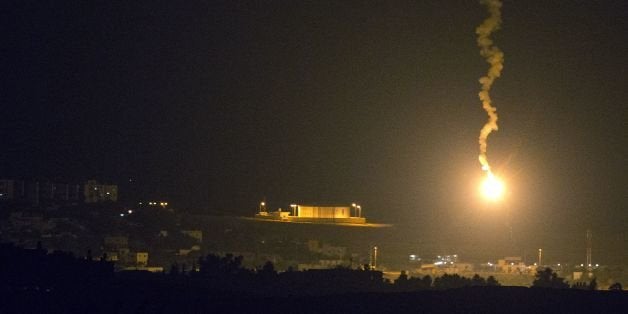
Eventually, there will be a ceasefire in Gaza. The real question is not if, but when. Another crucial question is how many Palestinian and Israeli lives will be lost, and how much destruction will be wrought before the bombings and rocket launches stop by way of a negotiated ceasefire.
The relevant question for those of us among the 5 percent of the world's population with U.S. citizenship is: What will the people and policymakers in the United States do to help stop the killing in Israel/Palestine?
I have been asked different versions of this question in Bethlehem's Manger Square, in a Palestinian shepherd's cave in the south Hebron Hills, and while protesting with Israelis against a previous assault on Gaza in Yitzhak Rabin Square in Tel Aviv.
I was asked this question by my Palestinian host when he drove me past 'tent cities' in Gaza City, where families slept under tarps atop the rubble of their homes pulverized by Israeli air strikes and bulldozers.
I was asked this question during my visit to Sderot, where Israeli peace activist Nomika Zion recounted to me times when sirens would sound off 60 times a day to warn of incoming rockets from Gaza. Then she would struggle to sleep at night when her walls would shake from Israel's bombardment of Gaza -- less than one mile away.
5 Steps U.S. Can Take to Support a Lasting Ceasefire Now
When I lived in the Middle East, Palestinians and Israelis would repeatedly emphasize to me just how crucial the role of the United States is in the occupation and the conflict. They were shocked to hear my accounts of most Americans being ignorant to their tax dollars going to help subsidize Israel's occupation of the Palestinian territories.
Washington can, however, play a positive role in de-escalating the violence in Israel/Palestine. The United States can take the following steps to press for an immediate ceasefire between Israel and Gaza:
The last provision of the 2012 ceasefire text committed "Egypt as the sponsor" of this ceasefire agreement to "follow up" in case either party reneges on its commitments.
To state -- or rather understate -- the obvious, Washington has limited influence on Palestinian militant groups like Hamas and Islamic Jihad. However, the Obama administration can influence Israel, and can commit to 'following up' if Israel breaches the terms of another ceasefire agreement.
Israel committed to implement these measures to ease the blockade 24 hours from the start of the ceasefire. However, a year and a half after the agreement, little progress has been made toward lifting the blockade. The majority of Palestinians in Gaza continue to live in crushing poverty because of Israel's restrictions on allowing Gaza to import construction materials to rebuild its bombed out neighborhoods, to export its products to the outside world, or to leave the Strip. This desperate situation has strengthened the appeal of extremist groups launching rockets from Gaza into Israel.
In the immediate aftermath of Israel's attack on Gaza in 2009, President Obama expressed support for lifting the blockade on Gaza, stating: "As part of a lasting cease-fire, Gaza's border crossings should be open to allow the flow of aid and commerce."
It's time for President Obama to renew his commitment to press Israel to lift the blockade on Gaza to help ensure that this time a ceasefire in Gaza and Israel will last.
Wake Up Call for Peace
This devastating escalation of violence could serve as a wake up call to not only Israelis and Palestinians, but also to people and policymakers in the United States to work vigorously toward an end to Israel's military occupation and the beginning of a just and lasting peace for all.
You can urge President Obama and your members of Congress to press for a ceasefire in Israel and the Palestinian territories, to demonstrate that there is a U.S. constituency for Israeli-Palestinian peace.